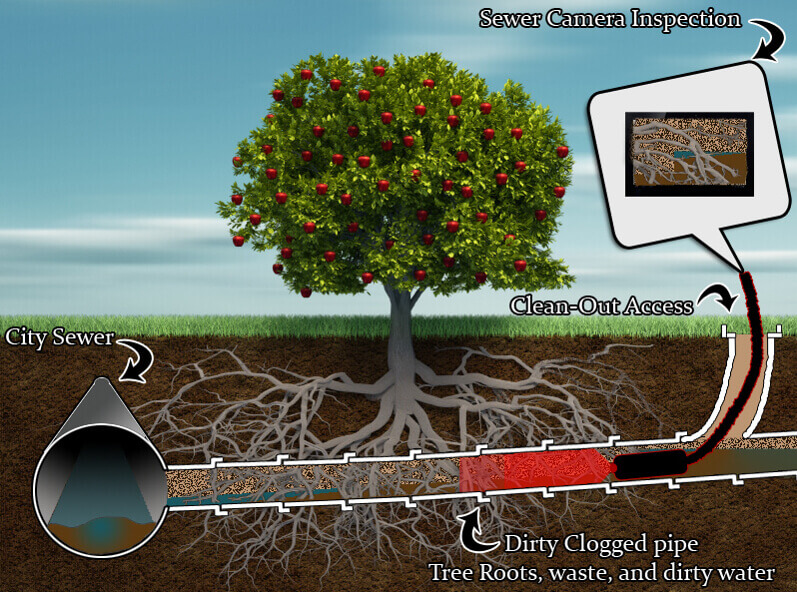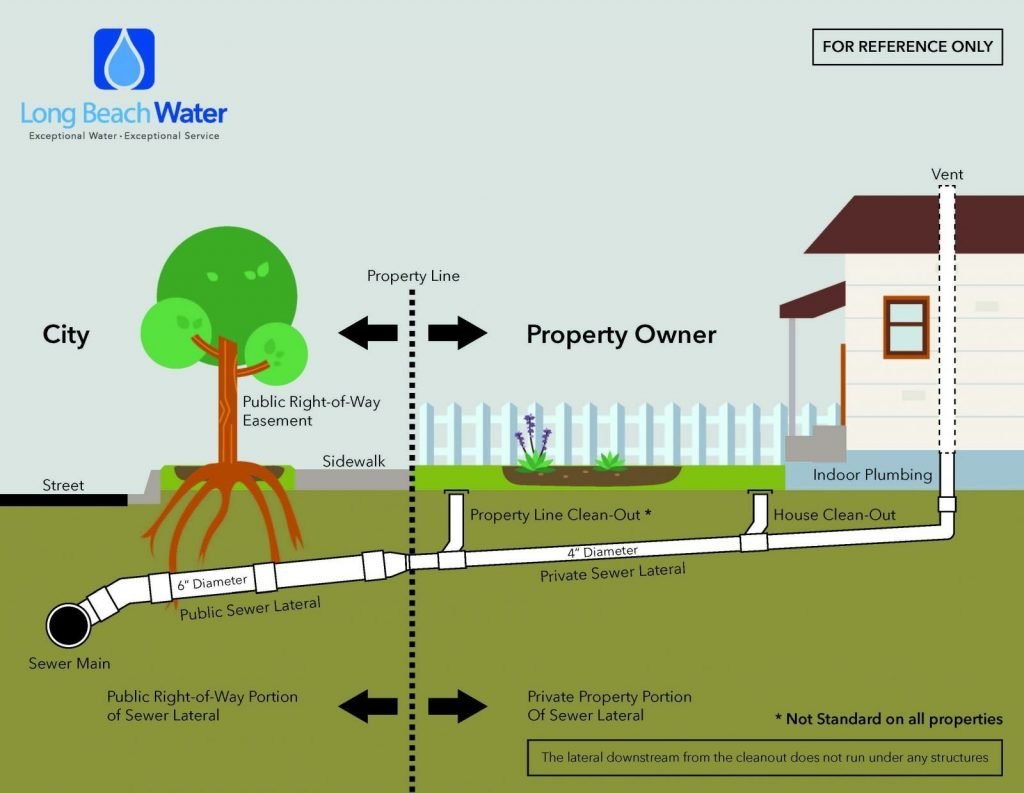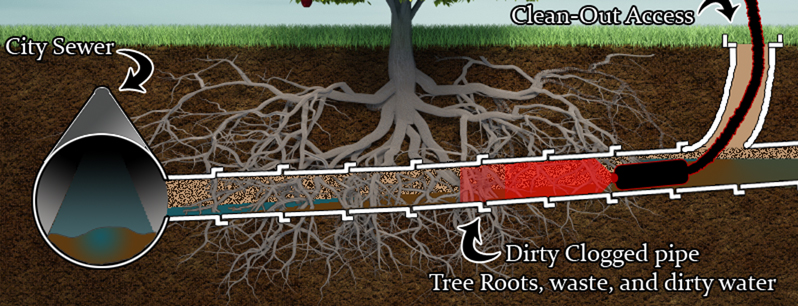Typical Sewer Line Troubles and Their Solutions: A House owner's Manual

Tree Origin Invasions
Tree origin invasions are a significant and usual problem influencing drain lines. As trees expand, their roots normally choose sources of water and nutrients. Drain pipes, particularly older ones made of clay or other porous materials, provide an attractive target. In time, origins can infiltrate small fractures or joints in the pipelines, causing obstructions and eventually creating significant damage. This invasion can cause slow drainage, sewage back-ups, and even total pipeline failure if left unaddressed.
Normal inspections making use of video cam technology can identify origin presence before it comes to be a severe issue. For an extra irreversible service, chemical origin awesomes can be used to hinder additional development within the pipelines. In extreme cases, pipe relining or replacement may be required to recover the honesty of the sewage system line.
Executing preventive steps, such as planting trees away from drain lines and making use of origin obstacles, can minimize the danger of future invasions, consequently guarding the performance of your drain system.
Pipeline Rust
Rust in drain pipelines is a widespread concern that can severely compromise the integrity and performance of a drain system. Commonly happening in metal pipes, such as cast iron or galvanized steel, deterioration arise from long term direct exposure to wetness, chemicals, and other corrosive agents located in wastewater. Over time, this process compromises the pipe wall surfaces, leading to leaks, breaks, and at some point, pipeline failure.
The main types of pipe deterioration include consistent rust, where the whole surface of the pipeline wears away uniformly, and local rust, such as pitting or crevice corrosion, which affect certain areas of the pipe. Recognizing the very early indications of rust, such as stained water or uncommon smells, is essential for prompt intervention.
Stopping pipe corrosion involves normal upkeep and inspections. Using protective layers, making use of corrosion-resistant products like PVC or polyethylene, and installing cathodic security systems can significantly prolong the lifespan of sewer pipelines. In instances where corrosion is already comprehensive, trenchless pipe recovery techniques, such as pipe cellular lining or pipe bursting, deal effective options without the demand for substantial excavation. Inevitably, aggressive monitoring and prompt repairs are important to reduce the harmful results of pipe rust on sewer systems.
Blockages and obstructions
Clogs and obstructions are among the most turbulent and usual issues affecting drain lines. These obstructions can arise from a variety of sources, including the accumulation of debris such as grease, food, and hair fragments, as well as the invasion of tree roots looking for wetness. Gradually, these materials accumulate, tightening the pipe and ultimately resulting in complete blockages that can create wastewater to support into homes.
Preventive actions are essential for mitigating the threat of obstructions. Routine upkeep, such as regular hydro-jetting and using enzyme-based cleaners, can aid keep pipes clear of particles. Home owners need to additionally be conscious of what they dispose of down their drains pipes; avoiding oil, coffee premises, and fibrous veggies can considerably minimize the chance of clogs.
In more serious instances, video assessment tools can be used to situate and detect the trouble, ensuring that the proper service is used successfully. Timely interventions and normal examinations can aid maintain the honesty and functionality of sewer lines.
Leaking Sewage System Lines
Beyond clogs and obstructions, leaking sewer lines offer a considerable problem for homeowners and municipalities alike. These leakages can arise from different factors, including pipeline deterioration, changing soil, invasive tree roots, and deterioration gradually. Left unaddressed, dripping drain lines can cause comprehensive property damage, advertise mold development, and present severe health and wellness threats as a result of the contamination of groundwater and soil.

Repair approaches depend upon the seriousness of the leak and the problem of the drain line. Minor leaks may be fixed with trenchless repair work strategies, such as pipe lining or pipe bursting, which are much less invasive and quicker to finish. In much more serious cases, traditional excavation and substitute of the affected pipe section might be necessary. Consulting with a qualified plumbing technician makes sure an accurate medical diagnosis and appropriate remedy to reduce the issue successfully.
Drain Line Bellies
When it pertains to drain line issues, one specifically tough issue is the formation of sewer line bellies. A sewer line belly happens when a section of the pipeline sags or dips, producing a reduced place where waste and debris can gather. This can result in slow down drainage, reoccuring blockages, and prospective damages to the pipe with time.
The sources of sewage system line stubborn bellies are varied. Poor setup techniques, soil erosion, ground settling, or shifts as a result of temperature changes can all add to the development of these droops - sewer line Extra resources inspection ct. Identifying a drain line belly generally calls for an expert assessment making use of a drain camera to pinpoint the exact place and level of the trouble
Dealing with a sewer line tummy often entails excavation to get to the afflicted pipeline area. When accessed, the sagging portion might require to be changed or repositioned to ensure appropriate slope and drainage. In some cases, trenchless repair work approaches, such as pipeline lining or pipeline bursting, can be utilized to decrease interruption while solving the problem.
Preventative measures, including normal assessments and guaranteeing correct installment, can aid alleviate the danger of sewage system line tummies. House owners need to remain vigilant for indicators of drain issues and seek specialist support at the very first indication of problem.
Verdict
In conclusion, dealing with common drain line problems such as tree root intrusions, pipeline corrosion, obstructions, dripping sewage system lines, and sewage system line stomaches is important for keeping a efficient and practical system. Early detection through video clip assessments and the execution of both momentary and long-term services can alleviate these concerns efficiently. Regular maintenance practices, consisting of strategic and hydro-jetting tree placement, more add to the prevention of these issues, therefore guaranteeing the long-lasting honesty of sewer systems.
Corrosion in sewage system pipelines is a prevalent problem that can significantly compromise the integrity and performance of a sewer system.When it comes to sewage system line issues, one particularly difficult issue is the development of sewage system line tummies. A drain line tummy occurs when a section of the pipeline sags or dips, producing a low area where waste and debris can gather. Recognizing a sewer line stomach usually needs a specialist assessment using a drain cam to identify the precise area and level of the issue.
